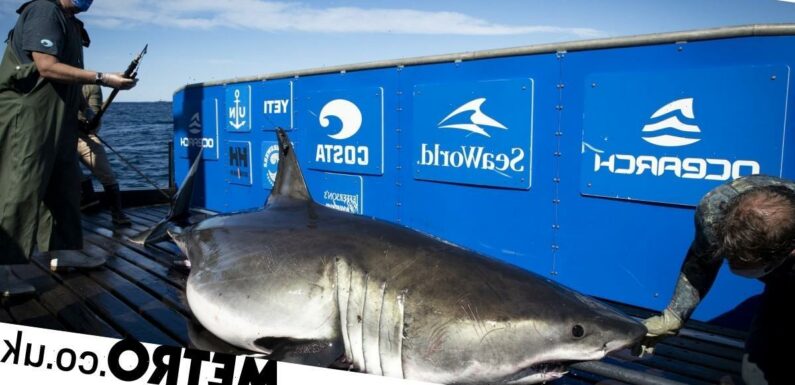
A great white shark fitted with GPS tracker drew a ‘self-portrait’ in the Atlantic Ocean.
The 13-foot apex predator, named Breton, was the first shark to be tagged during and expedition to Nova Scotia by the charity OCEARCH in 2020.
Whenever he surfaces for sufficient time, the tag in his dorsal fin ‘pings’ a GPS location back to shark trackers at the science organisation.
The 1,437lb (651kg) creature has travelled along the east coast of the United States, including New Jersey, Virginia and South Carolina.
And his movements across the span of 444 days have even mapped out the shape of a shark.
The humour wasn’t lost on OCEARCH’s social media followers.
‘Apex predator-level scientist trolling,’ one observer noted.
Another added: ‘Jaws? More like Draws.’
Breton’s location was first tagged on 12th September, 2020 at 1am at Scaterie Island, Nova Scotia.
Recently, he has been tagged on 21st September at 3.29am just off the coast of Baie de Plaisance in Quebec.
Although undeniably massive, Breton is actually about average size for a fully-grown great white.
The world’s largest predatory fish – and most famous of the sharks – can actually grow up to about 20-feet long and weigh over 5,000 pounds. Roughly the same as a small hatchback.
Despite their fearsome appearance, sharks are crucial to the health of the oceans.
Populations are shrinking due to combination of the international fishing industry and climate change.
The sharks that are left are increasingly coming into contact with larger human populations as warming oceans alter their distribution and movement.
Source: Read Full Article

